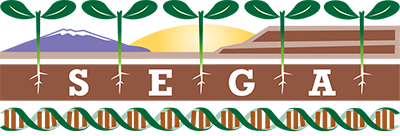You are here
From genes to geography: a genetic similarity rule for arthropod community structure at multiple geographic scales.
Publication Type:
Journal ArticleSource:
Molecular ecology, Volume 15, Issue 13, p.4215 - 28 (2006)ISBN:
0962-1083URL:
http://www.ncbi.nlm.nih.gov/sites/entrez?Db=pubmed&DbFrom=pubmed&Cmd=Link&LinkName=pubmed_pubmed&LinkReadableName=Related%20Articles&IdsFromResult=17054514&ordinalpos=3&itool=EntrezSystem2.PEntrez.Pubmed.Pubmed_ResultsPanel.Pubmed_RVDocSumhttp://www.ncbi.Keywords:
Animals, Arthropods, biodiversity, Genetic Variation, Genetics, Population, Models, Genetic, Populus, Rivers, Southwestern United StatesAbstract:
<p>We tested the hypothesis that leaf modifying arthropod communities are correlated with cottonwood host plant genetic variation from local to regional scales. Although recent studies found that host plant genetic composition can structure local dependent herbivore communities, the abiotic environment is a stronger factor than the genetic effect at increasingly larger spatial scales. In contrast to these studies we found that dependent arthropod community structure is correlated with both the cross type composition of cottonwoods and individual genotypes within local rivers up to the regional scale of 720,000 km(2) (Four Corner States region in the southwestern USA). Across this geographical extent comprising two naturally hybridizing cottonwood systems, the arthropod community follows a simple genetic similarity rule: genetically similar trees support more similar arthropod communities than trees that are genetically dissimilar. This relationship can be quantified with or without genetic data in Populus.</p>
- Log in to post comments
- Google Scholar
- RTF
- EndNote XML
- RIS
Theme by Danetsoft and Danang Probo Sayekti inspired by Maksimer
